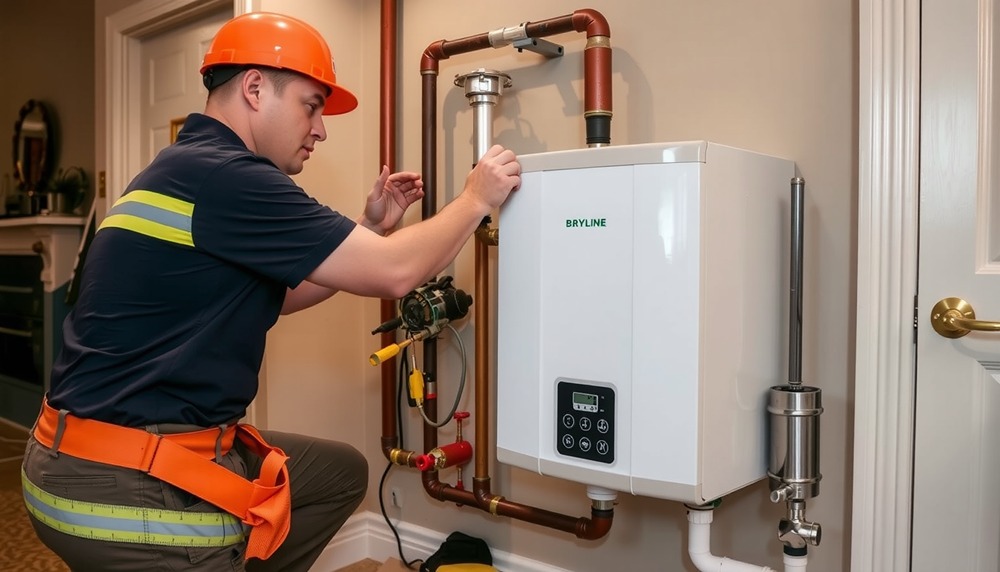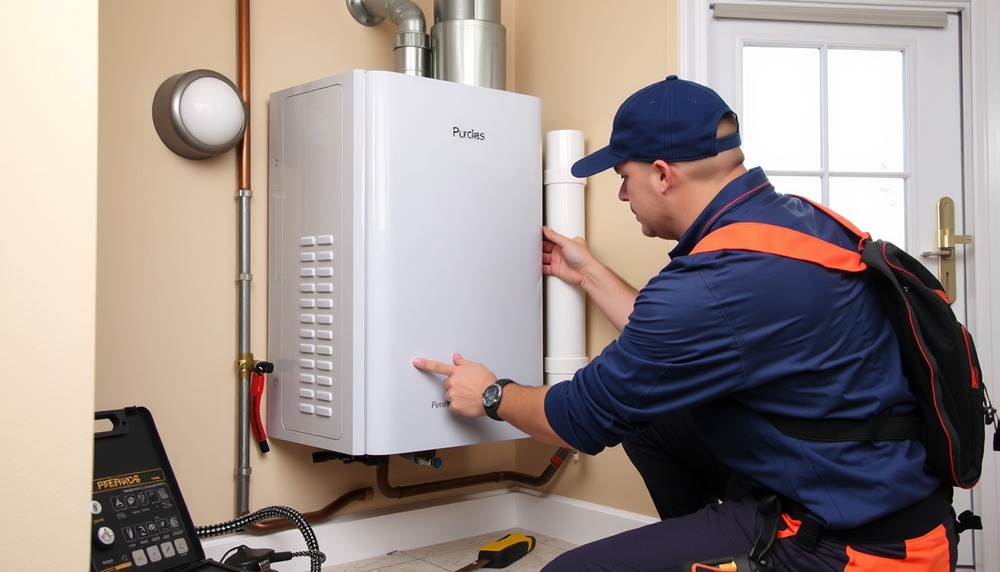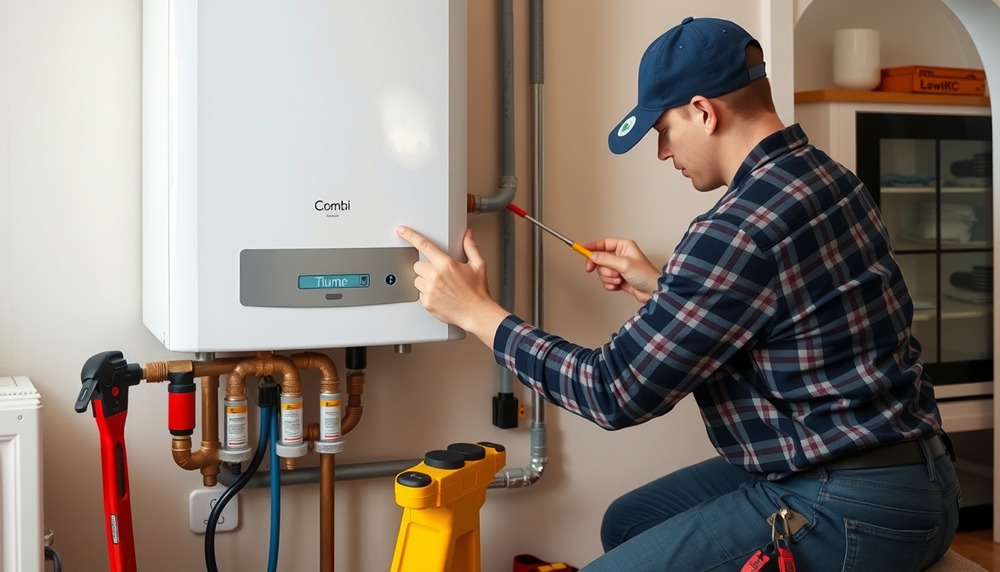Are you neglecting one of the most crucial aspects of home comfort? An efficient boiler installation is pivotal in maintaining a warm, safe environment, particularly in Glasgow, where heating standards are stringent. Navigating local boiler regulations can be daunting, but this step-by-step guide demystifies the process with clarity and precision. Whether you’re wondering about the necessity of a Gas Safe registered engineer or seeking guidance on selecting the appropriate boiler type for your residence, this comprehensive guide provides invaluable insights for achieving a seamless boiler installation.
Understanding Boiler Installation in Glasgow
Understanding local regulations is critical when considering a boiler installation in Glasgow. These regulations ensure that installations meet safety and efficiency standards, preventing potential hazards. A Gas Safe registered engineer is essential for this process. These professionals are certified to handle gas appliances and are familiar with the local codes, ensuring compliance with Glasgow’s specific heating regulations.
Mercer Plumbing Ltd is a reliable provider for boiler installations, offering services in various areas around Glasgow, including Clydebank, Bearsden, and Balfron. Their expertise in these regions ensures that installations are conducted smoothly and in accordance with local requirements. Choosing a local service provider familiar with the area’s regulations can streamline the installation process and enhance safety.
Legal and safety standards are paramount in boiler installations. Installers must adhere to specific guidelines, including proper venting of exhaust gases and ensuring that the system is compatible with the existing infrastructure. Compliance with these standards not only guarantees a safe installation but also ensures the longevity and efficiency of the boiler. Regular inspections and adherence to these regulations are necessary to maintain a high level of safety.
| Regulation | Description |
| Gas Safe Certification | Ensures that only qualified professionals handle gas appliances. |
| Proper Venting Requirements | Involves correct installation of flues to safely expel exhaust gases. |
| System Compatibility Checks | Ensures new installations integrate with existing plumbing and electrical systems. |
Choosing the Right Boiler for Your Home
Selecting the appropriate boiler type is crucial for meeting your home’s specific heating and hot water needs. Combi boilers are highly suitable for smaller homes or flats, where space efficiency is paramount. These boilers provide instant hot water and require less pipework, making them a cost-effective choice. System boilers, on the other hand, are ideal for homes with multiple bathrooms. They offer a consistent supply of hot water and require a separate hot water cylinder, which suits larger households. Regular boilers, often referred to as conventional boilers, are best for substantial properties or families with high hot water demand. These systems need both a cold water storage tank and a separate hot water cylinder, making them effective for homes with existing traditional heating systems.
Energy efficiency is a significant factor when choosing a new boiler, as it directly influences both environmental impact and household running costs. Modern boilers are designed with energy efficiency in mind, often achieving higher efficiency ratings compared to older models. This efficiency translates to potential savings on energy bills, making the initial investment in a new boiler economically beneficial in the long term. Opting for a boiler with a high energy efficiency rating not only reduces your carbon footprint but also enhances the overall energy performance of your home, contributing to improved energy performance certificate (EPC) ratings.
- Combi boilers for space-saving
- System boilers for multiple bathrooms
- Regular boilers for large families
- Consideration of energy efficiency ratings
- Impact of boiler choice on energy bills
Preparing for Boiler Installation

Preparing for boiler installation involves critical steps to ensure a safe and efficient process. The initial focus is on the removal of the old boiler, which requires turning off the water supply to prevent leaks or flooding. Following this, any residual water in the system must be drained to facilitate the removal of the existing boiler. Safety checks are paramount; ensuring there are no gas leaks is crucial before proceeding with the installation of a new boiler. These steps not only safeguard the property but also create a clean slate for the new boiler setup, minimising potential complications.
The tools and materials needed for these preparatory tasks are straightforward but essential. Having a reliable wrench and set of screwdrivers is necessary for disconnecting the old boiler. A bucket is useful for collecting drained water, while a gas leak detector can provide peace of mind during safety checks. Additionally, protective gloves and goggles are recommended to ensure personal safety throughout the process. Being equipped with the right tools and materials ensures that the preparation phase is conducted smoothly and efficiently, setting a solid foundation for the subsequent installation.
- Turning off the water supply
- Draining residual water from the system
- Conducting safety checks for gas leaks
- Removing the old boiler carefully
Detailed Boiler Installation Process
Aligning the new boiler with the existing pipework is a critical first step in the boiler installation process. Precision is essential to ensure that the boiler fits correctly and functions efficiently. The use of a template can aid in this alignment, helping to match the boiler with existing connections. Adjusting the telescopic flue is another vital task, as it must be set to the correct length to allow for safe venting of exhaust gases. Ensuring that the flue is securely fixed and properly positioned is crucial for both the safety and performance of the installation.
Once the boiler is aligned, attention turns to the plumbing requirements. Connecting the new boiler to the existing systems necessitates careful modifications, which may include cutting or soldering pipes to ensure a seamless integration. The flow, hot, and gas pipes must be aligned accurately, with any necessary adjustments made to accommodate the new system. This step is vital for maintaining the efficiency of the heating system and ensuring that all components function harmoniously. Proper planning and execution during this phase can prevent future issues and enhance system reliability.
The gas and electrical connection process requires meticulous attention to detail, as compliance with safety standards is non-negotiable. For gas-powered boilers, connecting the unit to the gas supply must be performed by a Gas Safe registered engineer to meet local regulations. The electrical supply must also be connected, with all wiring adhering to electrical safety standards. Additional circuits or outlets might be installed if necessary to accommodate the new boiler. Ensuring that these connections are executed correctly is critical to the boiler’s operation and safety.
Testing the system for efficiency and safety is the final essential step in the installation process. This involves checking all connections for leaks and ensuring that the boiler operates under optimal conditions. A comprehensive test ensures that the system provides the expected heating performance and adheres to all safety standards. Regular post-installation checks and maintenance are recommended to maintain system performance and longevity.
Final Setup and Testing
The final setup involves configuring the thermostat, which is essential for controlling the heating system efficiently. Accurate thermostat settings ensure that the boiler provides consistent and comfortable temperatures throughout the home. System testing to ensure optimal performance includes running a hot flush through the system and adding an inhibitor to prevent corrosion. These actions help maintain the boiler’s efficiency and prolong its lifespan, ensuring that the heating system operates smoothly and effectively for years to come.
Post-Installation Considerations and Maintenance
A post-installation inspection is crucial to confirm that the boiler system operates correctly and safely. This inspection involves checking all connections for leaks, ensuring that the flue is securely installed, and verifying that the boiler settings are accurate for optimal performance. The engineer will also test the entire system to ensure it meets the necessary safety standards. This step is vital to prevent future operational issues and to certify that the installation adheres to regulatory requirements.
Regular maintenance is essential for sustaining boiler efficiency and prolonging its lifespan. Key maintenance tasks include conducting a hot flush to remove sludge and debris from the system and adding an inhibitor to prevent corrosion. These tasks help in maintaining the efficiency of the heating system and avoiding potential breakdowns. Undertaking these maintenance activities annually ensures the boiler continues to function efficiently, reducing energy costs and enhancing performance reliability.
Troubleshooting common issues post-installation can prevent minor problems from escalating into major repairs. Monitoring boiler efficiency and performance regularly can help detect issues early. If the boiler is not heating effectively or making unusual noises, it could indicate a problem with the pressure or air in the system. Regularly checking the pressure gauge and bleeding radiators can address these issues. Keeping a watchful eye on the system’s performance helps maintain a consistent heating supply and mitigates the risk of unexpected failures.
- Schedule annual maintenance checks
- Perform regular system flushes
- Monitor boiler efficiency and performance
Final Words

Boiler installation in Glasgow requires adherence to local regulations and safety standards. Understanding these requirements ensures a compliant and efficient setup. Selecting the appropriate boiler for your home is crucial, considering both space and energy efficiency. Proper preparation, including safe removal of the old boiler, sets the stage for a smooth installation. The detailed installation process involves precise alignment and secure connections. Post-installation, regular maintenance and inspections safeguard your investment. Following a step-by-step guide to boiler installation in Glasgow guarantees reliable heating and comfort for years to come.

